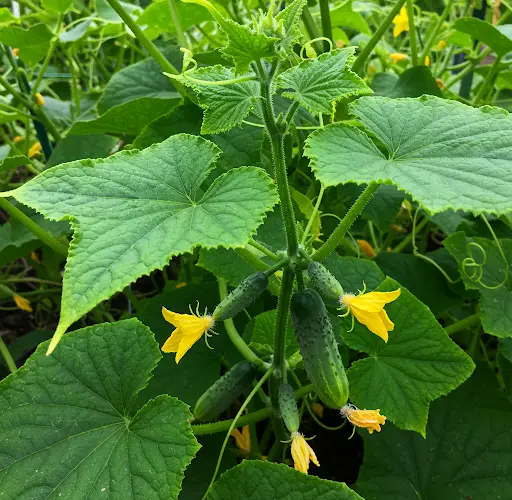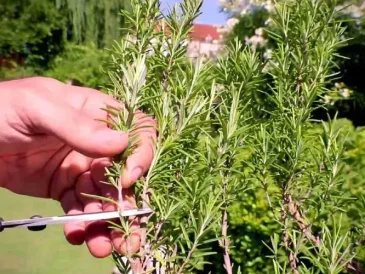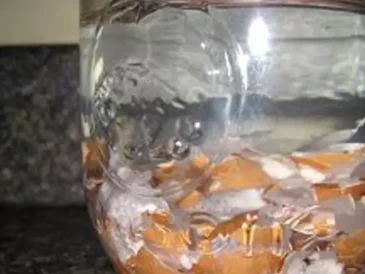How to Make Your Cucumber Plant Thrive with These Essential Tips
Cucumbers can be a rewarding plant to grow, but for beginners, they can present some challenges. If you’ve planted cucumbers but they’re not growing, are developing fungus on their leaves, or just aren’t thriving, don’t worry! This guide will show you essential tips and a foolproof fertilization method to help your cucumber plants grow strong and healthy all year round.
1. Planting Cucumbers in the Right Spot
The first key to success is choosing the right location for your cucumber plant. Cucumbers thrive in full sunlight, so make sure to plant them in a spot where they’ll receive at least 4 to 5 hours of direct sun every day. Without enough sunlight, cucumbers can become weak and struggle to grow.
2. Proper Watering Techniques
Watering cucumbers can be tricky. One crucial tip to remember is never water the leaves directly. Watering the leaves can increase the chances of fungal diseases like powdery mildew, which can cause the leaves to burn and curl up. Instead, focus on watering the base of the plant near the roots. This helps to prevent fungal growth and ensures your cucumber plant gets the hydration it needs without compromising its health.
3. Training Your Cucumber Plant
Cucumbers are climbing plants and benefit from support as they grow. Training your cucumber plant is an essential step for a healthy plant. You can use small strings, stakes, or even branches to help the cucumber vines climb. This will give them more space to grow, allow better airflow around the leaves, and prevent them from sprawling on the ground, which can lead to fungal infections.
4. Fertilizing Your Cucumber Plant
Now, let’s talk about fertilization. The right fertilizer can make all the difference in promoting healthy growth. For cucumbers, a combination of chicken manure and cow manure works wonders. Here’s how to prepare the ideal homemade fertilizer for your cucumber plant:
Ingredients:
- 2 liters of water (preferably chlorine-free water)
- 1 tablespoon of cow manure (well-aged)
- 2 tablespoons of chicken manure (well-aged)
Instructions:
- Mix the Fertilizer: In a container, add the water first. Then, add the cow manure and chicken manure. Stir the mixture well to ensure that all the nutrients are evenly distributed in the water.
- Let it Sit: Cover the container and leave the mixture in a shaded area for about 3 days. This allows the nutrients to infuse into the water, creating a nutrient-rich solution that your cucumber plant will love.
- Application: After 3 days, the mixture will be ready to use. It may have a strong odor, but don’t let that scare you—the plants actually thrive on it! Gently pour the fertilizer around the base of your cucumber plant, making sure not to get it on the leaves.
5. Why This Fertilizer Works
Both chicken and cow manure are rich in essential nutrients that cucumbers need to grow strong and healthy. Chicken manure is particularly high in nitrogen, which is crucial for leaf growth. This helps your cucumber plant develop lush, green leaves, which are essential for photosynthesis and overall plant health.
On the other hand, cow manure adds organic matter, calcium, potassium, and magnesium, which are beneficial for root development and help your plant take up nutrients more efficiently. These elements are also important for the overall growth and structure of the plant.
6. Applying the Fertilizer
When applying the fertilizer, make sure to water the base of the plant evenly. You can repeat this fertilization process every 7 days for optimal results. Over time, your cucumber plant will begin to flourish, growing bigger and stronger with each passing week.
7. Can This Fertilizer Be Used for Other Plants?
Absolutely! This fertilizer is not only great for cucumbers but also for other plants like tomatoes, kale, and mint. The combination of organic materials promotes healthy plant growth and is ideal for any type of garden.
8. The Result
By following these steps and using this homemade fertilizer, you’ll notice your cucumber plant growing healthier, with vibrant green leaves and strong vines. The fertilizer encourages robust growth in the plant, helping it produce the essential flowers that lead to fruit formation. Keep in mind that this fertilization method isn’t meant to directly stimulate fruiting; instead, it supports overall plant health so the plant can eventually bear fruit when conditions are right.
With consistent care, your cucumber plant will thrive and produce delicious cucumbers that are perfect for fresh salads, pickles, and more. Remember, this process isn’t just about applying the right fertilizer—it’s about creating the perfect environment for your cucumber to grow, from proper sunlight to smart watering techniques.
So, if your cucumber plant isn’t growing as expected, don’t hesitate to try this fertilization method. With a little patience and the right care, your plant will soon become a healthy, productive part of your garden. Happy gardening!





